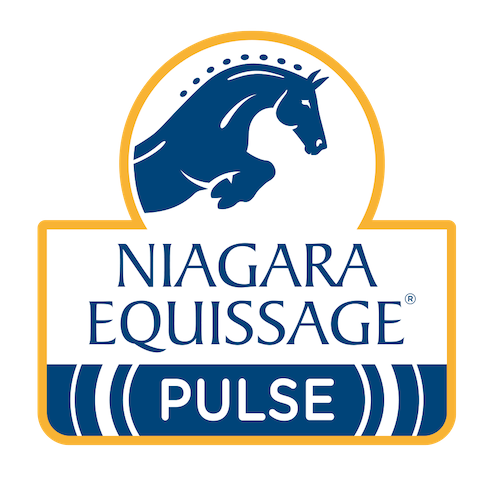Ligament / Tendon Strain
Tendons and ligaments are dense bands of fibrous tissue composed mainly of collagen. Tendons connect muscle to bone, while ligaments connect bone to bone.
The flexor tendons run down the back of the leg from the knee to the foot and their role is to flex the fetlock and the digit joints. The suspensory ligament lies at the back of the cannon bone, deeper than the flexor tendons, and stretches from the back of the knee to the sesamoid bones in the fetlock. The suspensory ligament provides support for the fetlock, preventing extreme over-extension.
Tendon strain and ligament injuries commonly occur in the lower limbs of horses, particularly amongst those that compete. Tendons and ligaments below the knee are most susceptible to injury. These include;
- The superficial digital flexor tendon
- The deep digital flexor tendon
- The accessory ligaments
- The suspensory ligament.
Tendon strain injuries usually result from excessive loading and overstretching, but may also be due to a direct blow to the tendon area.
Symptoms of tendon strain and ligament injuries
- Swelling
- Pain
- Heat
- Lameness
Can Niagara Equissage help with ligament and tendon strain on horses?
Most definitely.
Niagara Equissage is a proven therapeutic tool to aid in the healing of tendon strain and ligament injuries, which is why it is present in the yards of so many racehorse trainers, event, dressage and show-jumping riders.
The deep circulatory massage reaches all parts of the leg resulting increasing local blood and lymphatic circulation, thus reducing inflammation (swelling), easing tired and stretched muscles and aiding mobility of affected joints. Also, the same massaging effect actually tones (and so strengthens) fibres.
Application
For tendon strain and ligament injuries, use the Leg Boot on the outside of the affected leg (with the rubber cap against the joint if this is the target area). Turn on for a couple of minutes on a low speed and then turn up to at least a medium speed for 5-10 minutes. Ideally treat twice daily until the condition has healed.
Point to Note: The Niagara Equissage Back Pad should also be used as part of the warming up and warming down routines particularly with horses that are more prone to leg problems. This is so that muscles and ligaments are warmed through prior to exercise and then properly relaxed prior to the horse being stabled or turned out.

Testimonials
See All- Kentucky Derby Winning Trainer & Trainer of Horse of the Year, Zenyatta
"My Niagara Equissage is in use 4 hours every morning treating many horses for many things, including ALL horses racing that day. I find using the Niagara Equissage on tendons and suspensors removes soreness totally."
- “I use the Niagara Equissage on my horses everyday. It cuts my warm up time in half and my horses recover much faster after they have had a hard day at the show.”
- The circulatory benefits I see from the Back Pad creates an essential foundation of muscle relaxation on which to work. TheHand Unit is very efficient in targeting specific areas prior to addressing muscle/soft tissue problems such as trigger or stress points. Niagara Equissage is an important partner in my work to achieve performance improvement for my clients.

